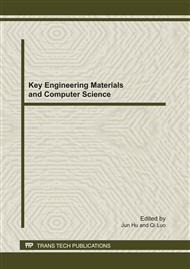p.373
p.377
p.382
p.388
p.394
p.399
p.404
p.410
p.415
Study on the Migration Law of Unmelted WC Particles during the Process of Centrifugal Casting
Abstract:
A model of the movement of WC reinforcing particles with the effect of centrifugal force during the process of centrifugal casting was established. The motion equations of the WC particles were solved in this model. The motion curve of the WC particles WC particle was drawn according to the motion equation, and the influential factors of WC particle's movement are analyzed. The conclusions show that: the radical movement speed of the WC particles increases with the increase of time, and the movement distance increases by exponentially at the same time. The particle movement distance at the same time increases due to the larger diameter, the quicker centrifugal speed and the higher the casting temperature. The radial pitch of the particle with different initial position becomes lager with the increase of time. Centrifugal Casting formed the final particle reinforced composites, in which the volume fraction of WC particles gradient increased from the inner surface to the outer surface.
Info:
Periodical:
Pages:
394-398
Citation:
Online since:
August 2011
Authors:
Keywords:
Price:
Сopyright:
© 2011 Trans Tech Publications Ltd. All Rights Reserved
Share:
Citation:


